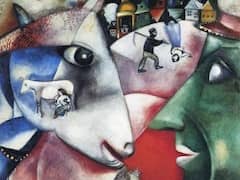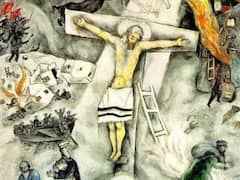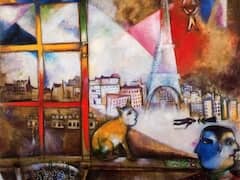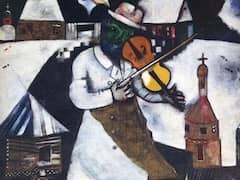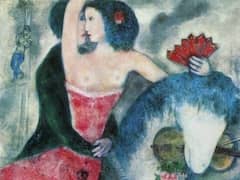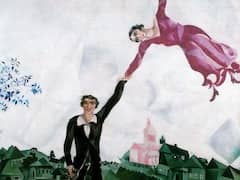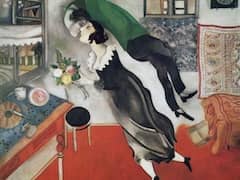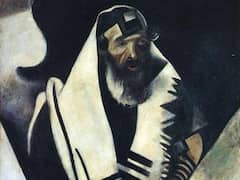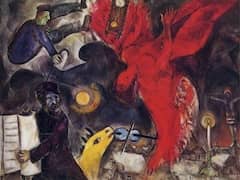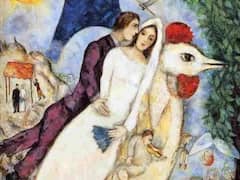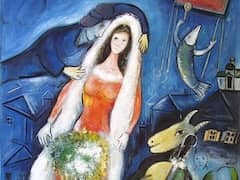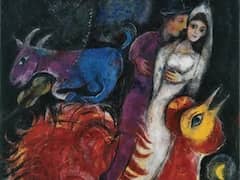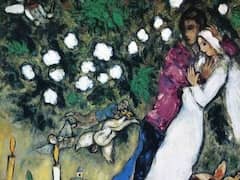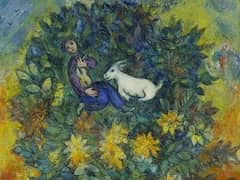A Wheatfield on a Summer's Afternoon, 1942 by Marc Chagall
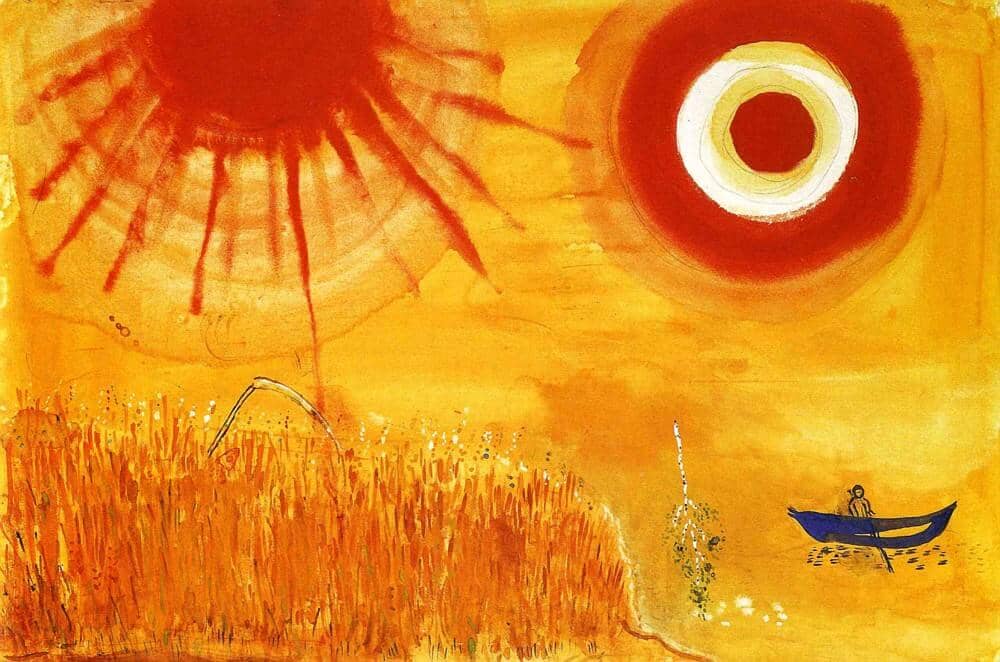
Marc Chagall's extraordinary contributions outside the medium of painting include his designs for the stage, encompassing theater, opera, and dance productions. The artist's six-year exile in the United States during World War II led to his first opportunity to work on a ballet. In 1942 the Ballet Theatre of New York (now the American Ballet Theatre) commissioned Chagall to design scenery and costumes for Aleko. This ballet was based on Pushkin's romantic poem The Gypsies and Tchaikovsky's Trio in A Minor, and was choreographed by Leonide Massine. It premiered in Mexico City (where Chagall completed the backdrops) on September 8, 1942, and opened at the Metropolitan Opera House in New York a month later. The ballet tells the tragic story of Aleko, a Russian youth who abandons city life. He joins a band of gypsies and falls in love with the gypsy girl Zemphira. But she betrays him, and finally Aleko kills her and her lover in a fit of jealous rage. Chagall sought, as he put it, to
Ppenetrate Aleko without illustrating, without copying anything. . . . I want the color to play and speak alone.”
He painted four backdrops, including this one, that set the stage with few symbolic elements and intense color.

